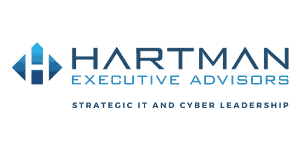Wade is an indispensable asset to his clients who benefit from his extensive experience working in the banking industry and expertise in using technology to solve issues ranging from operational inefficiencies and regulatory challenges, to cyberthreats. As Hartman’s Financial Services Industry Lead, he works alongside executives to create and execute technology roadmaps and data strategies to drive growth and innovation. Wade is a highly effective, multi-disciplined leader who thrives on identifying opportunities and creating strategies for businesses to build market share and increase overall profitability.

Mastering Regulatory Challenges: How Strong IT Governance Can Bolster Community Bank Operations
In a fast-changing environment, community banks that embrace strong processes, standards and frameworks to manage and protect data can preserve their reputations and profits.
Brought to you by Hartman Executive Advisors

Navigating the Regulatory Landscape
Community banks face strict regulatory requirements, including those outlined in the Dodd-Frank Act, the Bank Secrecy Act (BSA) and the Community Reinvestment Act, as well as regularly evolving banking laws. Complicating those compliance efforts is the growing importance of information technology (IT) and fintech partnerships to a bank’s operations.
In several recent cases, federal or state banking regulators have initiated compliance actions for seemingly minor non-compliance issues. As scrutiny increases, embracing a robust IT governance framework can be critical to protecting a bank’s reputation, operations and profitability.
A Growing Collection of Data
Community banks routinely gather diverse types of financial data and community statistics to gain valuable insights into customer behavior and market trends to benefit their clients. This data analysis typically includes:
- Transaction histories.
- Customer demographics.
- Market research studies.
- Community economic indicators.
Safeguarding this data is paramount, but as the volume of data grows, the management, storage and protection of it becomes increasingly complex. The expanding IT environment and the rising sophistication of cyber threats make this data more vulnerable. To adhere to standards such as the Bank Secrecy Act and data protection regulations, banks must establish strong IT governance frameworks.
Overcoming Challenges and Risks Through Proper IT Governance
IT governance is the set of processes and standards used to ensure the effective and efficient use of IT in enabling an organization to achieve its goals. Such goals include mitigating IT — and cybersecurity — related risks to strengthen the bank’s compliance posture. There are several different risk-based approaches to consider.
One emerging IT governance model that many community banks consider a best practice shifts the responsibilities of compliance departments from merely advising on how to comply to actively managing and monitoring risk. Under this model, leaders design key risk indicators (KRIs) to proactively identify potential compliance gaps and implement IT policies and procedures to ensure continuous monitoring of sensitive customer data.
Robust IT governance revolves around establishing uniform procedures that encompass development, operations and automation. For example, Roman Dróżdż, IT process manager of ING, implemented dual control for stored credit data, mandatory input validation to ensure only authentic data enters the bank’s records and improved scan configurations to identify system vulnerabilities. This level of expertise and implementation highlights the importance of strong IT governance in banks.
Partnerships are a popular way for community banks that lack the internal expertise to bolster their IT governance programs. Partnerships allow banks to leverage the expertise and resources of their partners to strengthen their overall compliance posture. As Dróżdż points out, “state governance today is almost always a software issue,” emphasizing the critical role of IT governance in modern banking operations.
Integrating IT Governance with Regulatory Compliance
According to research from Celent, community banks allocate significant financial resources towards meeting compliance requirements, with a clear emphasis on investments in IT. But budgetary investments alone are insufficient.
In an environment where digital initiatives and cyber risks are getting more complex, financial institutions that embrace a comprehensive IT governance framework can position themselves to stay ahead of the evolving regulatory landscape.
The compliance requirements cover various aspects of data security and confidentiality. They include rules laid out in the California Consumer Privacy Act (CCPA), the ISO27001 Standards and Systems and Organization Controls (SOC1 and SOC2). Additionally, it is crucial to stay aligned with the latest security testing standards for IT infrastructure.
In short, a growing number of banks understand that they must prioritize building strong IT governance programs to survive in a complex and ever-evolving regulatory environment that places a premium on data safety.
Ensuring a Secure and Compliant Future
Today, even the smallest community banks are obligated to provide regulators with accurate reports demonstrating their adherence with ever-evolving financial reporting standards.
Implementing a best-practice IT governance program can help assure regulators that the data the bank holds is safeguarded by rigorous risk management and internal controls. That can build trust with examiners, save the institution money and strengthen its reputation.


